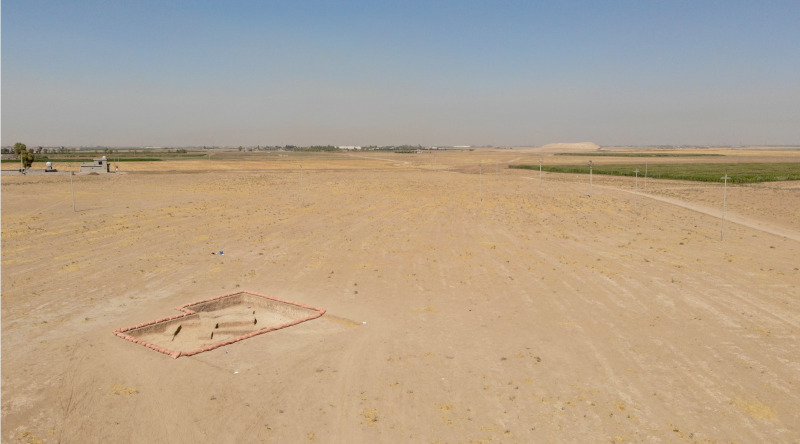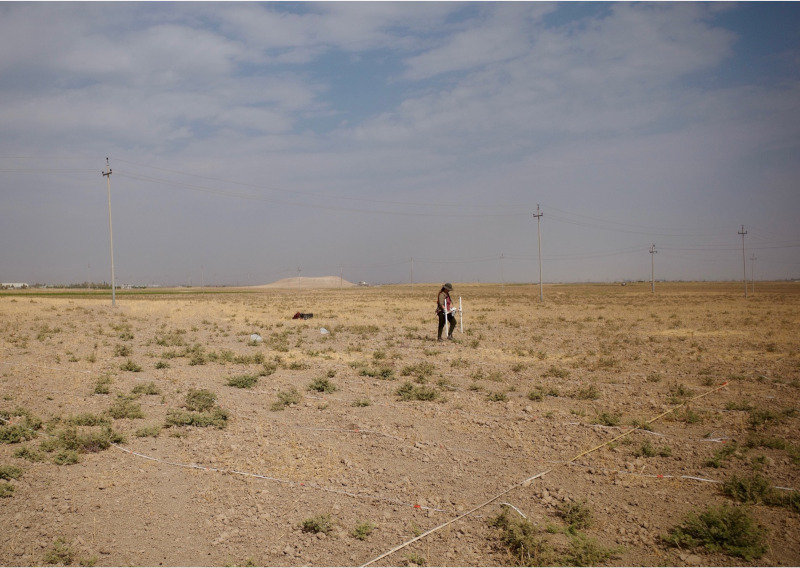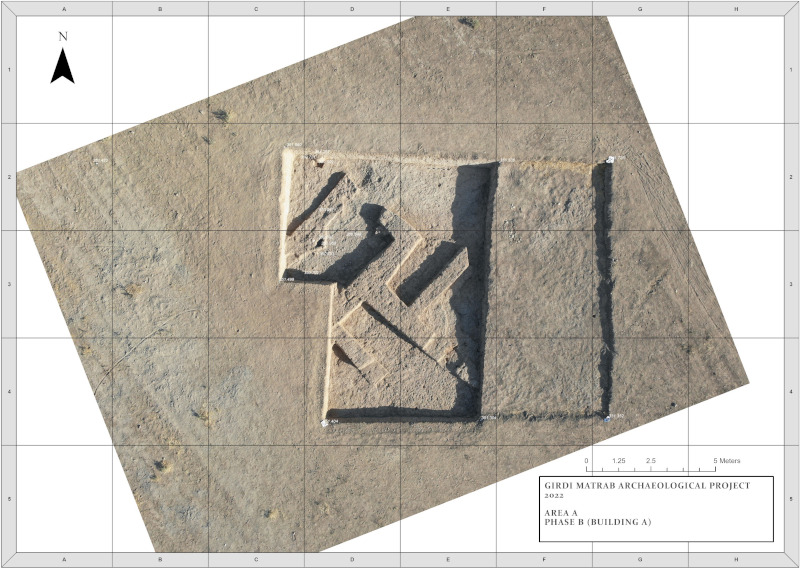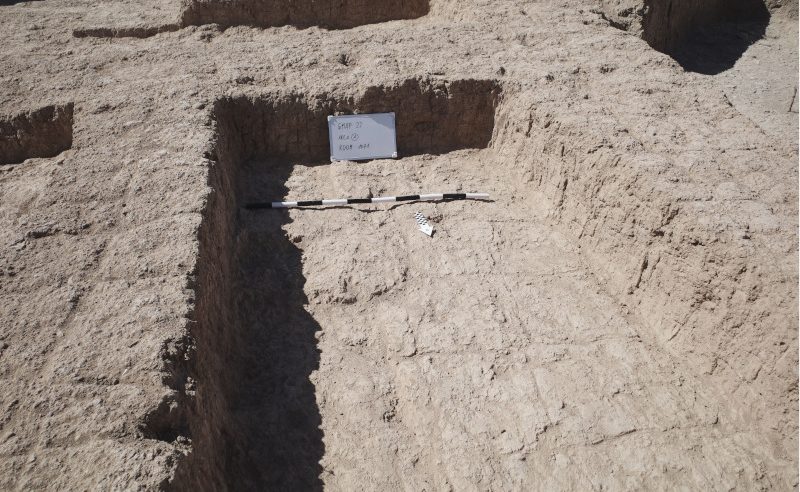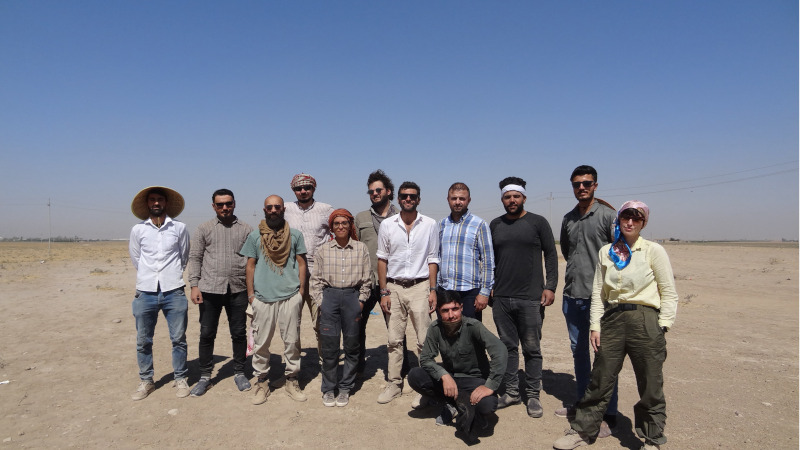
2022 Harris Grant Report: Girdi Matrab, Iraq
The first season of the Girdi Matrab Archaeological Project was generously funded by the ASOR Charles Harris Project Grant. Girdi Matrab (“the earthen mound” in Kurdish) is a multi-mound site located in the plain of Erbil, in the autonomous region of the Iraqi Kurdistan and was first surveyed by the Erbil Plain Archaeological Survey (EPAS), directed by Jason Ur in 2012.
Surface reconnaissance yielded an impressive amount of pottery sherds, that confirmed the habitation phase and the history of the settlement. Girdi Matrab was settled from the Late Chalcolithic period (5th millennium BCE) until the Uruk phase (4th millennium BCE). No indication of Bronze and Iron Age occupation has been detected at the site. On the contrary, the settlement expanded rapidly at the end of the 1st millennium BCE, reaching a quasi-urban size in the Hellenistic and Parthian-Roman period before being abandoned and never re-occupied again.
In view of the first proper excavation season, the site was also intensively surveyed in 2020 – thanks to the active participation of the EPAS Kurdish team members. In 2021, in collaboration with Petra Creamer (Emory University, USA) geophysical investigations were carried out at the site using a Bartington 601-2 Gradiometer, owned by the SPARC Lab at Dartmouth College, USA, highlighting, just below Mound 2, the remains of a large (40 x 40 m) building, with multiple rooms, internal courtyards, and hallways (Building A).
With the objective of investigating part of this sub-surface evidence, a 20 x 25 m trench was placed above the south-eastern corner of the building, on Mound 2. After 5 weeks of excavation, we unearthed four rooms, all built with mudbrick walls over stones and pebbles foundations. Two of these rooms opened towards an internal courtyard, where a complete tannur (open-air oven) was also recovered. One of these two rooms yielded a completely intact floor composed by pebbles, pottery sherds and animal bones. The close proximity to the open-air oven, and the presence of a mudbrick platform, and a small internal fireplace in the room, made us think that the space was used for cooking activities.
The adjacent room, smaller and with an unusual mudbrick floor, has been interpreted as a storage space, certainly connected to the cooking activities that were taking place in the bigger room to the West. The remaining two other room open towards the Southern part of the building, possibly connected to the unexcavated part of the complex through an elongated open-air hallway, whose extent has been partly identified during the 2022 season.
The analysis carried out on the ceramic repertoire excavated this year at Girdi Matrab has confirmed several hypotheses that were originally formulated prior to the campaign. The assemblage is mostly composed by commonware, with little or no inclusion of western-inspired, commonly known types such as the ubiquitous echinus bowls and/or Hellenistic period fish plates. Interestingly however we have identified a discrete number of specimens whose morphological tradition lies in the Iron Age and late Iron Age pottery horizon of the region.
On the base of the analysis of the ceramic material, we can securely date this phase of Building A to the period that covers a span of time between the late 4th and very early 3rd c. BCE.
The GMAP team focuses on the investigation of the domestic economy of a rural site in between the imperial transformation from the Iron Age to the early centuries of the 1st millennium CE. To better understand the socio-economic change of the Hellenistic and Parthian period Mesopotamia we rely on the analysis of the faunal remains excavated at the site. Nathalie Brusgaard (University of Groningen, the Netherlands), associate director of the GMAP, oversees the study of the zoo-archaeological evidence.
The presence of a large amount of commonware, the identification of young animals such as pigs and sheep, which could have been raised on site, as well as adult bovines – which might as well be oxen trained and used draft animals – seem preliminarily to indicate that Building A at Girdi Matrab could be a farm or farm-like estate.
We plan to continue investigating the rural economic landscape of the plain of Erbil in the future seasons, and we thank ASOR for supporting our research into this part of South-West Asia under the Seleucids, the Parthians, and the Romans, a critical but often overlooked period and one of central relevance for the understanding of the history of North Mesopotamia, and the Kurdistan Region of Iraq, in particular.
-Rocco Palermo, University of Pisa (Italy) and Bryn Mawr College (USA)
With the collaboration of
Nathalie Brusgaard (University of Groningen, Netherlands), Aila Santi (SOAS, London, UK), Valentina Grasso (Catholic University of America, USA), Jordan Brown (University of California at Berkeley, USA), Gabriele Viola (University of Pisa, Italy), Lara Pucci Daniele (University of Pisa, Italy), Michele Salvatore La Porta (University of Pisa, Italy), Parsa Kheirandish (University of Pisa, Italy), Ali Banishary (Directorate of the Antiquities, Erbil)
Learn more about the Girdi Matrab Archaeological Project at their website or their Instagram!
Interested in applying for a 2023 Charles Harris Project Grant? Learn more about applying here.
American Society of Overseas Research
The James F. Strange Center
209 Commerce Street
Alexandria, VA 22314
E-mail: info@asor.org
© 2023 ASOR
All rights reserved.
Images licensed under a Creative Commons Attribution-NonCommercial-ShareAlike 4.0 International License
COVID-19 Update: Please consider making payments or gifts on our secure Online Portal. Please e-mail info@asor.org if you have questions or need help.
